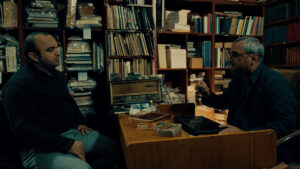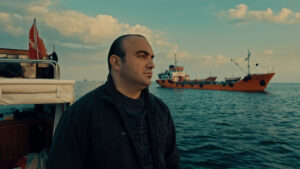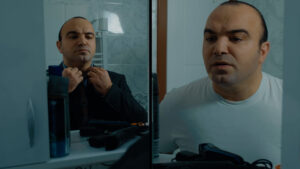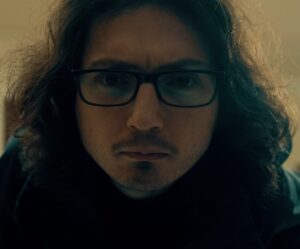11 Ago An interview with Serkan Aktaş, director of “The Librarian”
BIO
Serkan Aktaş is an award-winning independent film and video producer, director, writer, editor and educator who was born on December 4, 1989, in Istanbul, Turkey. After completing his primary, secondary and high school education in Istanbul, he enrolled in Anadolu University, Faculty of Business Administration, Department of Business Administration and Dokuz Eylul University, Faculty of Science, Department of Mathematics. After graduating from Department of Business Administration in 2013 and from Department of Mathematics in 2014, he enrolled in Beykent University, Institute of Social Sciences, Film and Television Master’s Program in 2015. In the same year, he studied 1 Year Film and Television Program at Istanbul Cinema Academy. After graduating from master’s degree in 2017, he started Film and Television Doctor of Arts program in Beykent University, Institute of Graduate Studies in the same year. He graduated from Doctor of Arts program in 2022.
The film “The Librarian” is influenced by Martin Scorsese’s “Taxi Driver” (1976) regarding the theme of communication and loneliness. Travis, the taxi driver who fails to reach his persona and returns as a non-hero from the Vietnam War, has remained vivid and hidden in memories.

In this film, the protagonist (Mazhar), on one hand, strives to study Spanish, believing that the great master of poetry, Federico Garcia Lorca, can only be discovered if read in his own language. On the other hand, he worries that his own language has been or will be attacked by other languages. Thus, he experiences an increasing loneliness as the unemployment is added to this inner distress. As a result, how the social environment affects the protagonist’s consciousness/inner world, and how he tries to get out of the stuck situation he is in is intended to be explained in this fictional film.
In terms of methodology, Mazhar’s imaginary “TWIN” version have been brought together with the “split screen” technique.
This approach emphasizes the dilemma and the internal conflicts experienced by the protagonist as well as the conflict between the different aspects of his personality/identity.
In the creation process of the story, the thoughts, emotions, and the quests within the protagonist’s world are portrayed within the framework of reality, while the viewers are not intended to fully identify themselves with the character. The ultimate goal is for the viewers to recognize the “situation” the character is in.

The library itself feels like its own character in the film. How did you go about using it as an atmospheric storytelling device?
Much of the film grapples with themes of cultural/linguistic identity and clashes between tradition and social change. What personal experiences influenced your interest in these themes?
Travis, portrayed by Robert De Niro, the anti-hero of Martin Scorsese’s 1976 film “Taxi Driver”, influenced the plot of the film.
Based on this film, which focuses on the problem of miscommunication and loneliness of the metropolitan people in the world we live in, I had the opportunity to do some research on this subject and watch many movies.
Accordingly, the idea of making a drama film about the problem of miscommunication and loneliness of modern man came to my mind, but I could not make an immediate decision. However, as we are in 2020s, a series of social-political-cultural changes have occurred in the country we live in, and the presence of Syrians, especially in Istanbul with more than a million people, and the Arabic language and culture that they want to impose has had an impact on me. As I started to think about this new situation, the character I would portray in the story began to take shape in my mind. This person would work in a “LIBRARY” that suited his intellectual identity and quests.
As the place where my character lives, I chose the district of Fatih in Istanbul, which is mostly preferred by the Syrian-Arab immigrants. Therefore, I made some observations to get a closer look.
I noticed that the migrants brought their own culture of life (especially the food culture) with them to this neighborhood. They opened shops, stores and restaurants, and preferred their own language, especially in signboards.
Concerned about the vulnerability of the Turkish language in this district in which it faces attacks from other languages, the character who works as a civil servant in a library has an intellectual identity and enjoys reading books. In fact, he even tries to learn Spanish in order to read Federico Garcia Lorca, whom he greatly admires, in its original language. However, he ends up unemployed and increasingly isolated. Therefore, I decided to make a film based on the identity of such an individual.
In the story, the film would also question the character’s own values and the significance of language in his life. It would also focus on how society pushes such sensitive individuals into loneliness. In reality, the whole thing would be an inner journey of the protagonist that shakes him by taking into consideration the possibilities offered by the language and the narrative techniques of cinema.

The cinematography has an almost dreamlike, melancholy tone that matches Mazhar’s psychology. Can you discuss your approach to the film’s visual style and how you shaped the overall look and feel?
In order to better explain Mazhar loneliness problem and her inner journey, “Blue” tones were preferred during the coloring phase.
Because the color blue is used in western painting to express the color of heaven and the color of freedom, as well as to express the feeling of loneliness, introversion and sadness; Especially in Picasso’s “Blue Nude” painting, he preferred blue color to show the loneliness and psychology of a woman in the best way.


